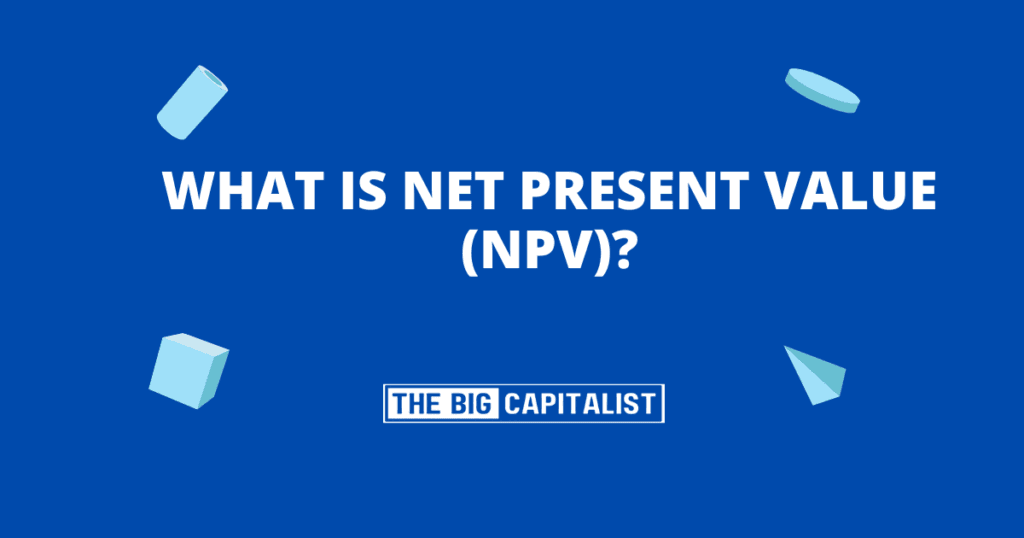Net Present Value (NPV) is a method used to evaluate the profitability of an investment. It calculates the difference between the present value of cash inflows and outflows.
But what does this mean in practical terms?
In essence, NPV determines whether an investment is likely to yield a profit. It accounts for the time value of money by using a discount rate in its calculations.
This guide explores the intricacies of NPV, including its formula, applications, and implications for businesses and investors. By the end, you’ll understand how to use NPV for financial analysis, investment strategies, and decision-making.
Understanding Net Present Value (NPV)
Net Present Value (NPV) is integral in financial decision-making. It helps businesses and investors see how valuable investments are. They do this by comparing future cash flows to the initial cost.
At its core, NPV values cash inflows and outflows over time. It adjusts these amounts using a discount rate, reflecting the time value of money.
NPV also highlights opportunity costs—the potential value lost when choosing one investment over another. This makes it a critical tool for comparing projects and optimizing returns.
The Time Value of Money and NPV
The time value of money is the principle that a sum of money today is worth more than the same amount in the future. This is due to earning potential, inflation, and associated risks.
NPV incorporates this principle by discounting future cash flows to their present value. This adjustment ensures accurate valuations, reflecting the real worth of future income streams today.
Without this adjustment, future earnings might appear inflated, leading to poor investment decisions. NPV corrects this by providing a realistic view of profitability.
The NPV Formula Explained
The NPV formula evaluates the current worth of future cash flows:
NPV = ∑ (Cash inflow/outflow) ÷ (1 + discount rate) ^ number of periods
Key components:
- Cash inflows/outflows: Expected income and expenses.
- Discount rate: The rate of return required to justify the investment.
- Number of periods: The duration over which cash flows occur.
The result indicates the net benefit or cost of the investment.
Step-by-Step: How to Calculate NPV
- Identify expected cash flows: List all inflows and outflows.
- Choose a discount rate: Account for inflation, risk, and opportunity cost.
- Determine the time periods: Identify the duration of the investment.
- Apply the formula: Adjust each cash flow using the discount rate.
- Sum the results: Add all present values to calculate NPV.
- Positive NPV: Indicates profitability.
- Negative NPV: Suggests a potential loss.
- Zero NPV: Represents break-even.
Choosing the Right Discount Rate
The discount rate is pivotal in NPV analysis. It reflects the expected return required to justify the investment.
Factors to consider:
- Risk: Higher risks warrant higher rates.
- Cost of capital: Represents the cost of funding the project.
- Market conditions: Economic trends influence rates.
Common ways to choose a discount rate are the Weighted Average Cost of Capital (WACC) or a required return rate based on investment goals.
Interpreting NPV Results
- Positive NPV: Indicates the investment will generate returns exceeding costs.
- Negative NPV: Suggests costs outweigh returns, signaling caution.
- Zero NPV: Represents a break-even scenario.
Applications of NPV
- Capital Budgeting: Helps prioritize long-term projects.
- Mergers and Acquisitions: Assesses potential gains from acquisitions.
- Project Management: Evaluates financial viability of initiatives.
- Personal Finance: Guides investment choices like education or mortgages.
While NPV is a powerful tool, it has limitations:
- Accuracy depends on projections: Incorrect cash flow estimates can skew results.
- Relies heavily on the discount rate: A poor choice can misrepresent outcomes.
- Excludes qualitative factors: Factors like employee morale or brand impact are not considered.
Using Sensitivity Analysis with NPV
Sensitivity analysis complements NPV by testing how changes in variables (e.g., discount rate, cash flow) affect results. This helps businesses anticipate risks and adapt strategies.
Conclusion: The Importance of NPV
Net Present Value (NPV) is a cornerstone of financial analysis. By accounting for the time value of money, it offers a realistic measure of profitability.
While it has limitations, NPV remains an invaluable tool for investment decisions, capital budgeting, and strategic planning. Combining NPV with other metrics ensures a well-rounded financial analysis.
FAQ: Understanding Net Present Value (NPV)
1. Why is NPV important in investment decisions?
NPV helps determine whether an investment will be profitable by comparing the present value of expected cash inflows to outflows. A positive NPV indicates a potentially worthwhile investment, while a negative NPV suggests it may lead to a loss.
2. How do I choose the right discount rate for NPV?
The discount rate should reflect the investment’s risk, cost of capital, and market conditions. Common choices include the Weighted Average Cost of Capital (WACC) or a required rate of return based on investor expectations.
















